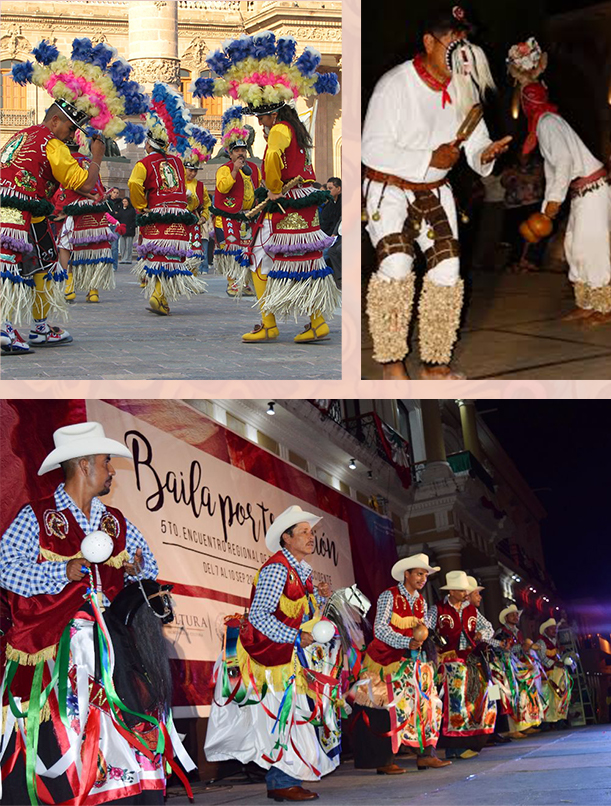Baile Folklorico
Northern Mexico

Zacatecas
Matachines is mostly performed in the states of Zacatecas and Aguascalientes but it is popular in various parts of the country, especially in the north. It consists of dancers in distinctive dress that includes brightly colored skirts, long tunics and feathered headdresses. The tunics were originally made with deerskin but today they are made with rayon but maintain the traditional arrow pattern decoration. The headdresses are made with colored chicken feathers that are often the three colors of the Mexican flag: green, white and red.
The headdress also often has a brain made with human or horse hair and fringe in the front that partially covers the faces of the dancers. The dancers wear sandals with wood soles to make more noise when they stomp. The dancers carry rattles on one hand and bows in the other, reminiscent of hunting. Another common adornment is a small mirror, usually over the arm.
Pascolas dancers wear white shirts and pants and a red handkerchief called a paliacate either around the neck or partially covering the face. A ribbon tied around the head with streamers or ribbons hanging from the back of the head to the waist. The calves of the dancers are covered in shells that rattles as he dance. They carry small metal pieces in their hands which they bang rhythmically along to music played on harps and violins. Other dances in the north include Caballitos, Chicaleros and Danza de Palma in Nuevo León, Tsacan Son in San Luis Potosí and Los Pardos in Zacatecas.
Sonora
Danza del Venado (Deer Dance) is performed in Sonora and Sinaloa and in the very far south of Arizona by the Yaquis and Mayos. The Yaqui Indians harness a deer in the dance to pay tribute to the deer's enduring spirit after it has been hunted, illustrated by the deer's struggle against the hunters. This dance is most associated with these peoples’ Lent and Easter celebrations, when indigenous beliefs mixed with the Catholicism introduced in the 17th and 18th centuries. The dance is part of ceremonies aimed at the renewal of the world in spring. Originally the dance was performed the night before hunting to ensure success, but today it is a means to communicate with other worlds. The deer dancer wears a shawl wrapped as a skirt with a belt traditionally made of deer hooves. He carries a gourd in each hand and ties rattles to his ankles. A real or imitation deer head is fastened to his head. Red ribbons wind around the horns to represent flowers.